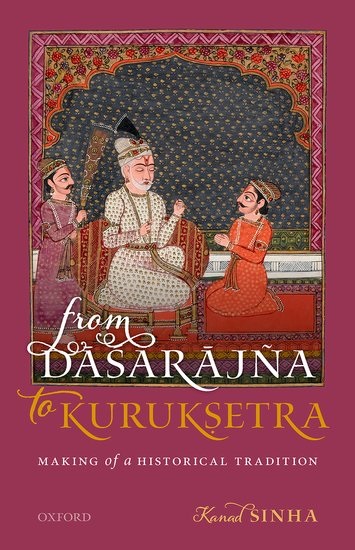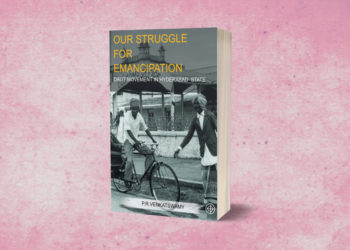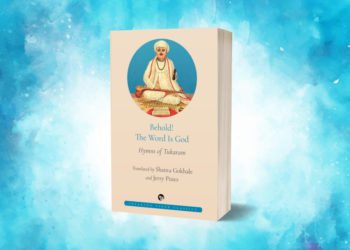Is it true that the ancient Indians had no sense of History? Kanad Sinha’s From Dasarajna to Kuruksetra begins with this question, pointing out how the ways of perceiving the past could be culture-specific and how the concept of historical traditions can be useful in studying the various ways of memorising and representing the past, even if those ways do not necessarily correspond to the methodology of the Occidental discipline called ‘History’.
Ancient India had several historical traditions, and the book focuses on one of them, the itihasa. It also shows how the Mahabharata is the best illustration of this tradition, and how a historical study of the contents of the text, with comparison with and corroboration from other contemporary sources and traditions, may help us restore the text in its original context in the bardic historical tradition about the Later Vedic Kurus. Is the Mahabharata then an authentic history? This book does not claim so. However, it shows how the text had originated as a critical reflection on a great period of transition, how it dealt with the conflicting philosophies of the transitional period, how it propounded its thesis by creating new kinds of heroes such as Yudhisthira and Krsna, and how the text was reworked when it was canonised by the brahmanas.
The following are excerpts from the book.

From the Foreword
– by Romila Thapar
Epic literature of earlier times frequently focuses on conflict between the important clans in a region, and this encapsulates much of their pattern of living— that is, their culture. In the Mahābhārata, the Kurus and the Pāṇḍavas battle for land rights in the Doab. The actual area that each comes to control is not extensive but with the listing of allied and hostile clans on each side, whether actually present or not, the strife in the epic takes on a bigger dimension than what might have been involved in realistic terms. This is another characteristic of the epic form: a small conflict can easily be enlarged into a far bigger confrontation with participants from every part of the known geography. How this geography is expanded is of much historical interest. A dramatic illustration is provided in the Odyssey of Homer, where a large part of the Mediterranean is inducted into the narrative.
The other way of extending the geography is to send the protagonists into exile for a period. The location of the exile need not be too distant but preferably should have the potential of being culturally alien so as to introduce expanded geographies and multiple cultures. This gives scope to the imagination of the bard to invent diverse societies with a license to colour realism with fantasy where needed. The ostensible purpose of this is to entertain the audience, but it can also be used as expressing a comment on the society of the protagonists. Exile to the forest in both the Indian epics is to a place where the pattern of living, the culture, is different from that of the protagonists. The latter may be sympathetic to this pattern or may treat it as antithetical. If it is the former, the people of the forest become allies, but if it is the latter, they have to be subdued.
Arjuna’s experiences as he travels and his marriages to various women were to some degree a commentary on the culture of the Pāṇḍavas, as was Bhīma’s marriage to Hiḍimbā. The voyage home of Ulysses from Troy to Ithaca was a matter of a few weeks, but the poet extends it to a few years with the ship constantly being taken off course by wind and wave. The cultures they meet with in these travels are diverse and extraordinarily different from their own. Distant places have always been an excuse to let the imagination run. Exile extends the context and implies that the narrating of epic events is not to be restricted. It also allows the bard/ poet to present vignettes of situations that may otherwise merely divert from the main narrative.
The entry of Kṛṣṇa of the Vṛṣṇi clan into the story was what might be called a significant accretion. It has been suggested that he may not originally have been one of the central figures when the story was first composed. By the time it became a much known and quoted epic, it appears to have been taken up by the Bhārgavas who found it possible to weave into the epic the Vaiṣṇava cult of Vāsudeva. Many questions arise if one even considers the possibility of this happening. Why at this point was it necessary to give authority and publicity to the cult of Kṛṣṇa? The historical context would have been that of the post- Mauryan period given Sukthankar’s dating of the Mahābhārata as having been composed during the period from 400 BCE to 400 CE. This was a time when the Śramaṇic religions were riding high with the patronage of an emperor and subsequent royalty as well, and that of wealthy merchants. Aśoka’s edicts suggest tension between the brāhmaṇas and the śramaṇas, and other sources indicate a conflict.
The epic genre, because it is open to interpolations, can support more than one narrative even in its current Critical Edition. There is the original epic of the clash of clans and the ultimate victory of the Pāṇḍavas. Built into this is the narrative of Vaiṣṇavism through divinizing Kṛṣṇa and giving him a more central role. This is in part reinforced by the somewhat different trajectory of what have been called the narrative sections and the didactic sections, where some of the latter seem to be add- ons. This has been discussed by many scholars of the epics, among them V.S. Sukthankar and R.N. Dandekar. However, the differentiation cannot be made in a literal manner where all the early sections are taken as narrative and all the later sections as didactic, or alternatively all the narratives are taken as early and the discussions as didactic and therefore late. Kanad Sinha’s study takes care not to automatically assign them as early or late without considering other features. This involves a careful analysis of both the text and its context.
[…]
From Viśvāmitra versus Vasiṣṭha: Reshaping a Vedic Legend
The existence of itihāsa- purāṇa as a tradition parallel to the Vedic tradition is undoubted. The tradition was not a kṣatriya tradition as such but a bardic tradition that possibly grew under political patronage. However, this entire tradition was ultimately codified by the brāhmaṇas. Not a single text can be found in its original bardic condition. In fact, the existent Purāṇas are nothing but Brahmanical mythological texts endorsing one or the other Brahmanical bhakti sect (Vaiṣṇava, Śaiva, Śākta, etc.). The Mahābhārata and the Rāmāyaṇa possibly were immune from such gross alterations, thanks to their widely known and highly popular storylines. Therefore, attempts to stratify these two texts are still possible. The same cannot be said about the Purāṇas. Therefore, despite Pargiter’s insistent efforts to prove the historical accuracy of the Purāṇas, they remain highly doubtful sources for reconstructing the history of Vedic or post- Vedic times. The present Purāṇas, no doubt, contain some remnants of the old purāṇa tradition. But identifying those is nearly impossible except in some rare cases where some strongly identifiable supporting evidence is available. Therefore, in our discussion, we will focus mainly on the Mahābhārata and the Rāmāyaṇa, looking at the Purāṇic stories only occasionally.
However, bracketing the Mahābhārata and the Rāmāyaṇa together is also problematic and needs qualification. The Rāmāyaṇa is not an itihāsa text, not even a purāṇa, but a piece of poetry (kāvya). Still, it can be considered as a source of traditional history, since originally it also seems to be a production of the bards. The central event of the Rāmāyaṇa revolves around the Ikṣvākus of Kosala, who have a minor role in the Vedic world. Unlike the Kuru- Pañcāla dominance of the Vedic landscape, which is attested by almost all kinds of sources, the historical role of the Ikṣvākus in the early historical period is highly doubtful. Vedic literature hardly shows any knowledge of the characters, events, or places associated with the Rāmāyaṇa. However, by the time of the Buddha, Kosala under the Ikṣvāku kings Mahākosala and Prasenajit was quite prominent. Archaeology also indicates that Kosala’s rise possibly started from BCE 700 onwards. The amount of historicity, if any, in the original kuśīlava tradition which Vālmīki fashioned into an epic is thus questionable.




